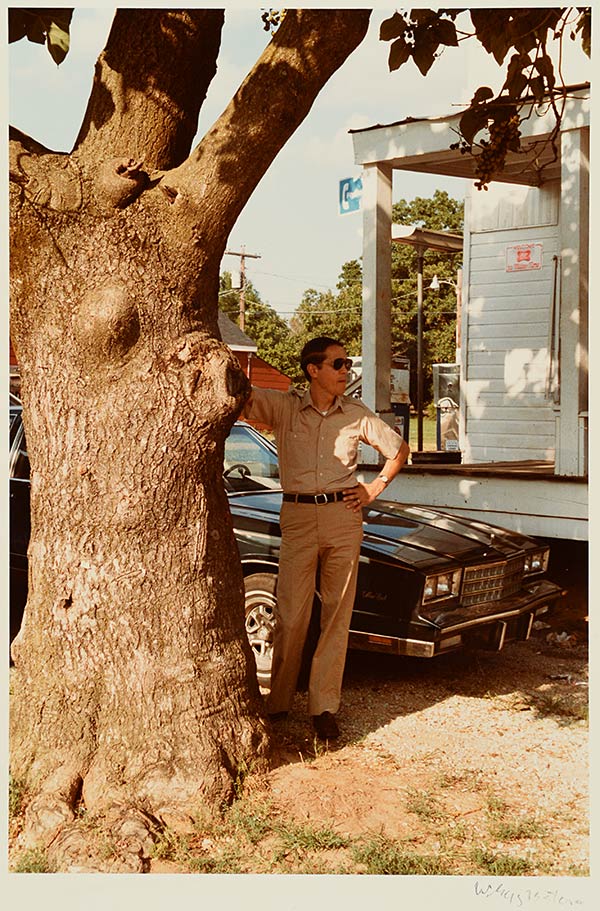
Untitled, 1983
William Eggleston (1939 – )
Photograph taken in Waterford, Mississippi. The man leaning against the tree is noted photographer and friend of William Eggleston, William Christenberry.
William Christenberry Takes A Stand
W. Ralph Eubanks
“Young man, you know exactly where to stand with that little camera.” As he observed him taking photographs, Walker Evans’s comment about the way William Christenberry stood with his camera was a subtle way of complementing his artistry, since Evans also knew a thing or two about finding the right perspective. In the 1930s, Evans photographed many of the same spots in Hale County, Alabama, as Christenberry, photographs many of us know from Evans’s creative collaboration with the writer James Agee Let Us Now Praise Famous Men. In 1973, two years before Evans’s death, Christenberry—a Hale County native—took Evans to Alabama with him, leading Evans not only to pay attention to his technique with his toy-like Kodak Brownie but also to encourage him to continue using this very basic camera. Christenberry later worked with an 8 by 10 view camera, but the essence of his work was unchanged. He always knew where to stand.
Walker Evans, William Christenberry, and William Eggleston are the three most important photographers of the American South, and their body of work is linked together in one long creative chain. Christenberry found creative inspiration in the work of Evans and his stark images the Southern landscape. Let Us Now Praise Famous Men shaped Christenberry’s artistic sensibilities, as did the work of William Faulkner and Eudora Welty. When Christenberry taught at the what is now the University of Memphis, he became friends with Wiliam Eggleston. It was after seeing Christenberry’s color photography—photography that often was used in collages and inspired small models of real and imagined architectural structures—that Eggleston was inspired to begin photographing in color, photographs that sometimes use elements of collage. Christenberry encouraged this exploration of the medium of color and, like folklorist and collector William Ferris, accompanied Eggleston on trips around the South. It was on one of these trips that Eggleston took the portrait of Christenberry that is in the exhibition “The Beautiful and the Mysterious.”
William Christenberry died on November 28, 2016, from complications related to Alzheimer’s disease. What linked Christenberry and Eggleston was not just their lineage to Walker Evans. Christenberry’s photography of decaying structures in Hale County, Alabama, captured the Gothic South and in Eggleston’s work the Gothic and Bohemian Souths collide with the juxtaposition of stark ordinariness and psychic disarray. And Eggleston’s portrait of Christenberry, taken on one of their photographic expeditions, shows that both men knew exactly where to stand.
